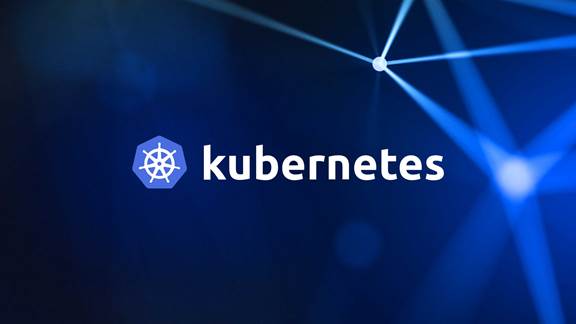Cloud-native architecture has taken center stage for technology leaders. Simplifying infrastructure through cloud native allows IT organizations to focus more strongly on code and to strengthen the connection to the business and its customers. While adoption of a cloud native strategy means fundamental alteration in team structures, processes and organizational culture, the benefits far outweigh the challenges of such change.
Containers, microservices, event streaming, and APIs have become part of working in a cloud-native environment. A single application is packaged as microservices in containers–up to several hundred in some cases. As the number of applications multiplies, the need to manage all those containers along with their properties is obvious. Enter Kubernetes, an open-source orchestration technology that has become an IT standard for cloud native environments.

When you think cloud native, think Kubernetes
What it does
Kubernetes boosts the benefits of cloud native. It shifts human-system interaction from a pattern of “do this, then do that” to "this is what I want.” With that information, Kubernetes takes care of the rest. The result: resilient, flexible, scalable applications with improved resource utilization.
Tasks like deploying, configuring, scheduling, monitoring and restarting containers are handled by Kubernetes. This frees up resources that would otherwise have to be allocated to those tasks. Management of workloads are handled by declaring what should run, and Kubernetes continually takes steps to ensure the desired workloads execute. At any time, Kubernetes can be queried to ascertain the current state of workloads.
In addition to configuring an application, Kubernetes handles
- Deploying new versions of applications, and rolling back to old versions
- Restarting containers when they encounter issues that result in crashes
- Scaling out application containers
- Network connectivity between containers
- Migrating containers when underlying hardware fails or is rotated out for maintenance
- Monitoring resource usage and application performance
- Packing containers into available server resources
Benefits and challenges
Kubernetes supplies the infrastructure for running application containers as well as an API to configure the applications. Kubernetes provides ways to declare:
- What resources the application should talk to
- The necessary secrets and certificates your application needs
- How many copies of the application to run
- What version of the application to run
Benefits to the business include:
- More cost-efficient use of computing infrastructure
- Protection from underlying hardware failures
- Ability to scale up computing resources for an application on demand
- Faster development lifecycles
- Speedy innovation from continuous integration/continuous deployment
- Simplified application scalability without adding operational overhead
In essence, Kubernetes in a cloud-native environment is a significant contributor to competitive success in the marketplace.
Along with the benefits of Kubernetes come challenges, including:
- Security and compliance
- Observability and monitoring
- The high evolution speed of the Kubernetes platform
- Sourcing the right skill sets in new employees
- Training current employees
Also of note, the shift to containers, microservices, and APIs can require a significant change in organizational and team culture. If this change is not successfully made, progress can be slow or completely stalled.
These challenges can be mitigated or entirely resolved with managed Kubernetes services through an experienced third party provider - a provider that has already-trained personnel, experience across multiple organizations and business sectors and can address key challenges and the ability to keep up with Kubernetes as it evolves so you don’t have to. In short, look to partner with a managed services entity that can help ensure optimum value with low risk.
Where to start?
Getting started with Kubernetes means getting started with cloud environments. While many enterprises have begun the journey, a lot haven't yet embarked. Here are points to consider:
Think people first, then processes.
In the context of culture change, make sure your teams understand the new direction and how it impacts them. Involve them in the creation of processes that align with the move toward cloud. Look at how teams are structured and, if needed, revise to better support trust and collaboration between members.
Start before there's a cloud in sight.
Containers and microservices are not exclusive to the cloud. Before any move is made to a cloud-based environment, move from your existing architecture to a more modular, microservices-based architecture with API/event streaming communication. Test the new processes and team structures now.
Choose the right tool for the task.
Ensure that you have a platform that makes the most of Kubernetes and that supports the languages and frameworks of your cloud environment.
Work with the right third party.
Bring in experts who have "been there & done that" to help you move quickly in the desired direction. They will contribute learnings and insights that will assist your decision making and planning.Hire a managed services provider to handle the day to day details of maintaining a productive cloud environment.
Kin + Carta: Your Kubernetes connection
Moving to the right cloud environment and making sure the right tools are doing the right things are just two parts of how we help clients adopt new technology architectures. Kubernetes is always at the heart of our cloud-native engagements, and our experts have helped produce results that directly impacted the business.
- One of North America’s largest food distribution companies increased customer satisfaction and competitive edge with streamlined cloud-assisted ordering. Behind the scenes, the team executes 2,920 deployments a year and one-hour workload portability and redeployment.
- A large wholesale and non-bank mortgage lender wanted to leverage its 400% growth in 2020 by modernizing its systems. The company realized $500k operational savings per month from the process improvements resulting from the transition to cloud and microservices supported by Kubernetes,
Wherever you are in the cloud-native journey, consider us your partner. Our Kubernetes expertise, coupled with our experience spanning multiple cloud platforms and strategies, can help you move quickly in the right direction.
*This blog includes contributions from the team at CrossVale.